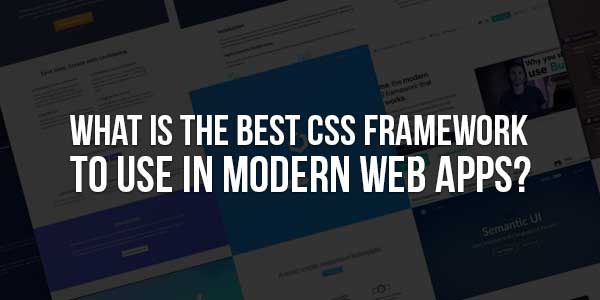
Table of Contents
What Is The Best CSS Framework To Use In Modern Web Apps?
Choosing the right CSS framework can make or break your web development workflow. With so many options available, it’s easy to feel overwhelmed. Should you go with a tried-and-tested giant like Bootstrap, or opt for a utility-first approach like Tailwind CSS? In this guide, we’ll break down the top CSS frameworks for modern web apps, comparing their strengths, weaknesses, and ideal use cases.
Why Use A CSS Framework?
Before diving into the best frameworks, let’s understand why they matter. CSS frameworks provide pre-written, reusable code that helps developers build responsive, consistent, and visually appealing websites faster. Here’s why they’re essential:
- Faster Development: Skip writing repetitive CSS from scratch.
- Responsive Design: Built-in grid systems ensure mobile-friendliness.
- Cross-Browser Compatibility: Works seamlessly across different browsers.
- Consistency: Maintain a uniform design language.
“A good CSS framework is like a well-organized toolbox—it saves time, reduces errors, and lets you focus on creativity.”
Top CSS Frameworks For Modern Web Apps
Here are the leading CSS frameworks in 2024, each with unique advantages:
1. Bootstrap
Bootstrap remains the most popular CSS framework, trusted by millions of developers. Originally created by Twitter, it offers a robust grid system, pre-styled components, and extensive documentation.
Pros Of Bootstrap
- Huge community support
- Rich component library (buttons, modals, navbars)
- Easy to learn for beginners
Cons Of Bootstrap
- Can lead to generic-looking websites
- Heavy file size if unused components are included
2. Tailwind CSS
Tailwind CSS takes a utility-first approach, allowing developers to build custom designs without leaving HTML. It’s highly flexible and perfect for developers who want full control over styling.
Pros Of Tailwind CSS
- Extremely customizable
- No predefined components—build anything
- Smaller final CSS bundle with PurgeCSS
Cons Of Tailwind CSS
- Steeper learning curve
- Requires more manual styling
3. Bulma
Bulma is a modern, Flexbox-based framework that’s lightweight and easy to use. It’s purely CSS—no JavaScript included—making it great for developers who prefer separate styling and functionality.
Pros Of Bulma
- Simple and clean syntax
- Flexbox-based grid system
- No JavaScript dependency
Cons Of Bulma
- Smaller community compared to Bootstrap
- Fewer pre-built components
4. Foundation
Foundation by ZURB is a sophisticated framework designed for complex, enterprise-level projects. It’s highly modular and offers advanced features like motion UI.
Pros Of Foundation
- Highly customizable
- Great for large-scale applications
- Strong focus on accessibility
Cons Of Foundation
- Overkill for simple projects
- Steeper learning curve
5. Materialize
Materialize is based on Google’s Material Design principles, offering sleek, modern components with smooth animations.
Pros Of Materialize
- Beautiful, ready-to-use Material Design components
- Good documentation
- Built-in JavaScript plugins
Cons Of Materialize
- Less flexible for non-Material designs
- Heavier than some alternatives
How To Choose The Right CSS Framework?
Selecting the best CSS framework depends on your project’s needs. Consider the following factors:
Project Size And Complexity
For small projects, Bulma or Tailwind might be ideal. For large-scale applications, Bootstrap or Foundation could be better.
Customization Needs
If you need complete design freedom, Tailwind CSS is the way to go. If you prefer ready-made components, Bootstrap or Materialize are better.
Performance Requirements
For lightweight solutions, consider Bulma or Tailwind. Avoid bloated frameworks if speed is a priority.

Final Verdict: Which One Should You Use?
There’s no one-size-fits-all answer. Here’s a quick recommendation based on common use cases:
- For Beginners: Bootstrap (easiest to learn)
- For Custom Designs: Tailwind CSS (maximum flexibility)
- For Material Design Lovers: Materialize (ready-to-use components)
- For Lightweight Projects: Bulma (no JavaScript, clean syntax)
- For Enterprise Apps: Foundation (scalable and modular)
“The best CSS framework is the one that aligns with your project goals and team expertise.”
Conclusion
Each CSS framework has its strengths and weaknesses. Bootstrap is great for quick prototyping, Tailwind CSS excels in customization, and Bulma offers a lightweight alternative. Evaluate your project’s needs, team familiarity, and design requirements before making a choice.
Ultimately, the best CSS framework is the one that helps you build beautiful, responsive, and maintainable web apps efficiently. Happy coding!

















Be the first to write a comment.